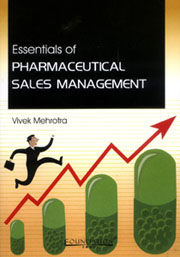Book contents
- Frontmatter
- Contents
- Acknowledgements
- Introduction
- 1 Role
- 2 Performance Management
- 3 Territory and Market Knowledge
- 4 Joint Fieldwork
- 5 On-the-job Training
- 6 Managing Key Customers
- 7 Development of Weak or Underdeveloped Territories
- 8 Performance Counselling
- 9 Management of Vacant Territories
- 10 Induction of a New Medical Representative
- 11 Organising and Conducting Successful Meetings
- 12 Monitoring
- 13 Performance Appraisal
- 14 Managing People Productively
- 15 Interface with Marketing
- Postscript
- Appendices
11 - Organising and Conducting Successful Meetings
Published online by Cambridge University Press: 26 October 2011
- Frontmatter
- Contents
- Acknowledgements
- Introduction
- 1 Role
- 2 Performance Management
- 3 Territory and Market Knowledge
- 4 Joint Fieldwork
- 5 On-the-job Training
- 6 Managing Key Customers
- 7 Development of Weak or Underdeveloped Territories
- 8 Performance Counselling
- 9 Management of Vacant Territories
- 10 Induction of a New Medical Representative
- 11 Organising and Conducting Successful Meetings
- 12 Monitoring
- 13 Performance Appraisal
- 14 Managing People Productively
- 15 Interface with Marketing
- Postscript
- Appendices
Summary
Meetings are a means of exchanging ideas, views, feedback and strategies. They are also the meeting ground for the field force and the management representatives, that is, you, the employees of the Head Office (members of the Product Management Team), the Zonal Office, and the Regional Office. As Field Manager, you are the most important representative of your team. To share the company's viewpoint, strategies, to review performance or to get important feedback, you need to conduct various meetings. In addition to these meetings you will also be conducting the doctors' group meetings or symposia. Therefore, organising and conducting successful meetings is an important responsibility of the Field Manager.
The strength of these meetings will range from two or three persons of a pool territory to six or eight people of your full area. Remember that the success of such meetings depends upon how your team members participate in them. Do they do it out of compulsion or do they enjoy your company and that of the other members? Hence, in order to have meaningful discussions during these meetings, create an environment wherein every team member contributes freely without any hesitation.
There are various objectives for conducting a meeting, such as:
to review the promotional plan of the last quarter or cycle and plan for the next quarter or cycle
to discuss the performance (rupee-wise and product-wise) against targets and objectives for the year-to-date (YTD) period
[…]
- Type
- Chapter
- Information
- Essentials of Pharmaceutical Sales Management , pp. 133 - 160Publisher: Foundation BooksPrint publication year: 2007



